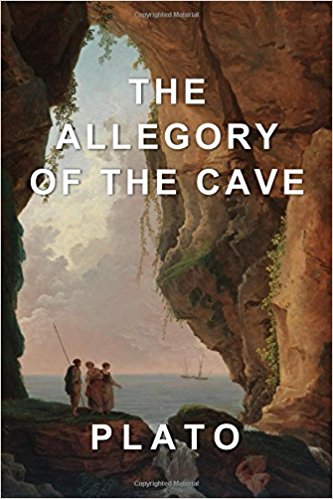

Polemarchus will be killed during that rule. The speakers, who are talking about the best regime in speech, are about to endure the worst regime in deed as the rule of the Thirty Tyrants is about to take place in Athens. The dialogue occurs in the home of Cephalus, an old man, whose son Polemarchus is also present, but does not take part in the conversation after BK. Both Adiemantus and Glaucon are Plato’s brothers, so it would appear that Plato is concerned about looking after his “kin” or his “own” in this dialogue. The allegory of the Cave occurs at the beginning of Bk. However, when things become more subjective, like success or beauty, they can become warped by experience, judgements, beliefs and our values.Commentary: Plato’s Allegory of the Cave:Ī translation of Plato’s allegory of the cave Context of the Allegory: When things are physical, like a table, or an arm, or a phone, they are easier to see and look at objectively.

How do we really know that our perception of things is based on concrete observation, or simply a warped and biased view of an abstract concept. The Allegory of the Cave is an interesting thought experiment. Socrates himself was sentenced to death for challenging the status quo. It is uncomfortable to accept that the world around you is different to what you have understood it to be, it can be destabilising to find out that what you believe to be true, is in fact false. Ignorance to many is bliss, and when the reality of the world is challenged, or the perspective of the individual is challenged, the challenge can often be met with hostility. This analogy was used by Plato to try and explain the feeling of being a philosopher attempting to educate the general public. The other prisoners, seeing that he can no longer make out the shadows, think that his time away has made his foolish, blind and naïve, causing them to resist his help as they desire to remain chained. The prisoner returns to the cave looking to explain his findings to the other prisoners, still chained and looking at the shadows on the cave wall.Īfter his return he finds that he can no longer discern the shadows on the wall, his new found perspective preventing him from seeing what was once clear. Outside the cave, people begin to explain to the prisoner that the shadows he is seeing are not real, simply a representation of the thing itself he begins to question everything he knows to be true.

Seeing the shapes of a dog, a cart, a wagon or a sword, the prisoners begin to give names to these things, believing that they are seeing the things themselves.Īfter some time one prisoner is freed, and he leaves the cave to see the outside world, shielding his eyes from the sun. Given that they have been chained up since birth, they have no knowledge of life outside the walls of the cave, simply the cave itself and more specifically the wall of shadows.īehind these prisoners, every so often, people will walk by in front of the fire, casting a shadow on the wall and allowing the prisoners to see something of what is going on behind them.

In The Allegory of the Cave Plato explains that the cave contains prisoners who have been chained up since birth, unable to see the light behind them and only able to see the wall of the cave in front of them. Behind us is a fire, a light source which we are unable to turn and see, and ahead of us is a wall of shadows cast by the light. The Allegory has us imagine that we are chained in a cave. The Cave is Plato’s way to express the difference between what people see and the reality of things and is written in the Republic as a conversation between Glaucon (Plato’s brother) and the philosopher Socrates. Also known as Plato’s Cave this is an analogy put forward by the Greek philosopher Plato in book seven of The Republic, in which the philosopher was exploring the idea of an ideal society through virtues like justice and truth.


 0 kommentar(er)
0 kommentar(er)
